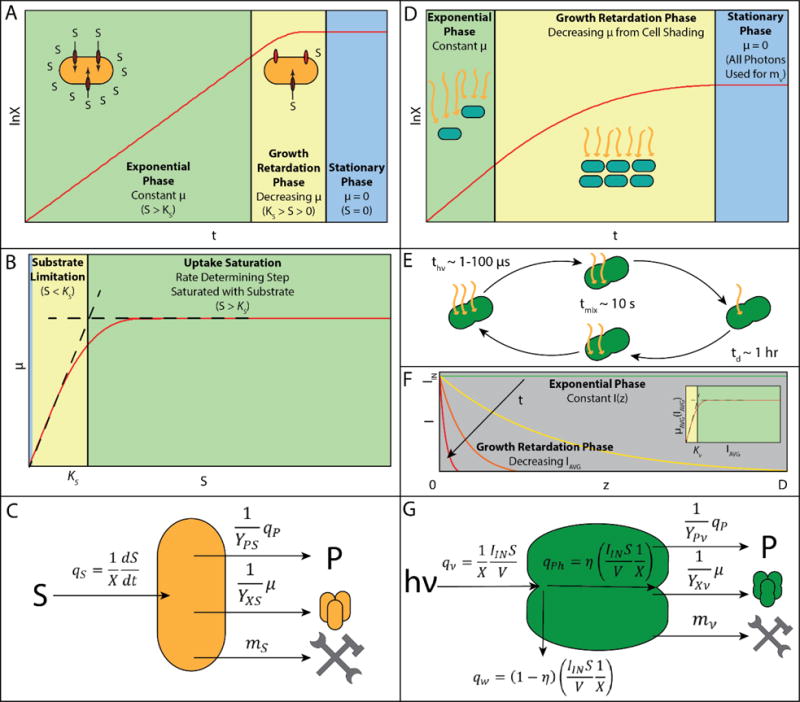Figure 2.

Comparison of phenomena driving different growth phases for molecular substrate limitation (A–C) or light-limitation (D–G). (A) Uptake saturation results in an exponential growth phase until substrate is depleted and the culture enters a short growth retardation phase. Once substrate is fully depleted, the culture enters stationary phase. (B) Monod kinetic model says that high substrate concentration results in uptake saturation leading to constant specific growth rate. As substrate is depleted to the region of Ks, substrate limitation begins resulting in rapidly decreasing specific growth rate. (C) Substrate balance says that substrate uptake rate (qS) is equal to the sum of substrate utilization for product synthesis (qPYPS−1), growth (μYXS−1), and maintenance (mS). (D) Light-Limited batch growth of cyanobacteria has a short exponential growth phase followed by a long growth retardation phase caused by cell-shading, eventually leading to stationary phase when all incident photons are used for maintenance and product synthesis. As cell density increases the biomass specific photon delivery rate decreases until all incident photons are required for cell maintenance, at which point the culture enters stationary phase. (E) The difference in order of magnitude between the characteristic times of mixing (tmix), light reactions (thν), and growth (td) suggest that specific growth rate can be accurately estimated by IAVG. (F) When cultures are at low cell density, the light intensity I(z) approximately constant across the thickness of the reactor (z). As cell density increases, I(z) is determined by Beer’s law and results in decreasing IAVG. (F-Inset) Using IAVG, one can write a Monod growth law for μAVG (Equation 4). (G) Photon balance says that the specific photon uptake rate (qν) multiplied by the photosynthetic efficiency (η) is equal to the sum of energy utilization for product synthesis (qPYPν−1), growth (μYXν−1), and maintenance (mν).
